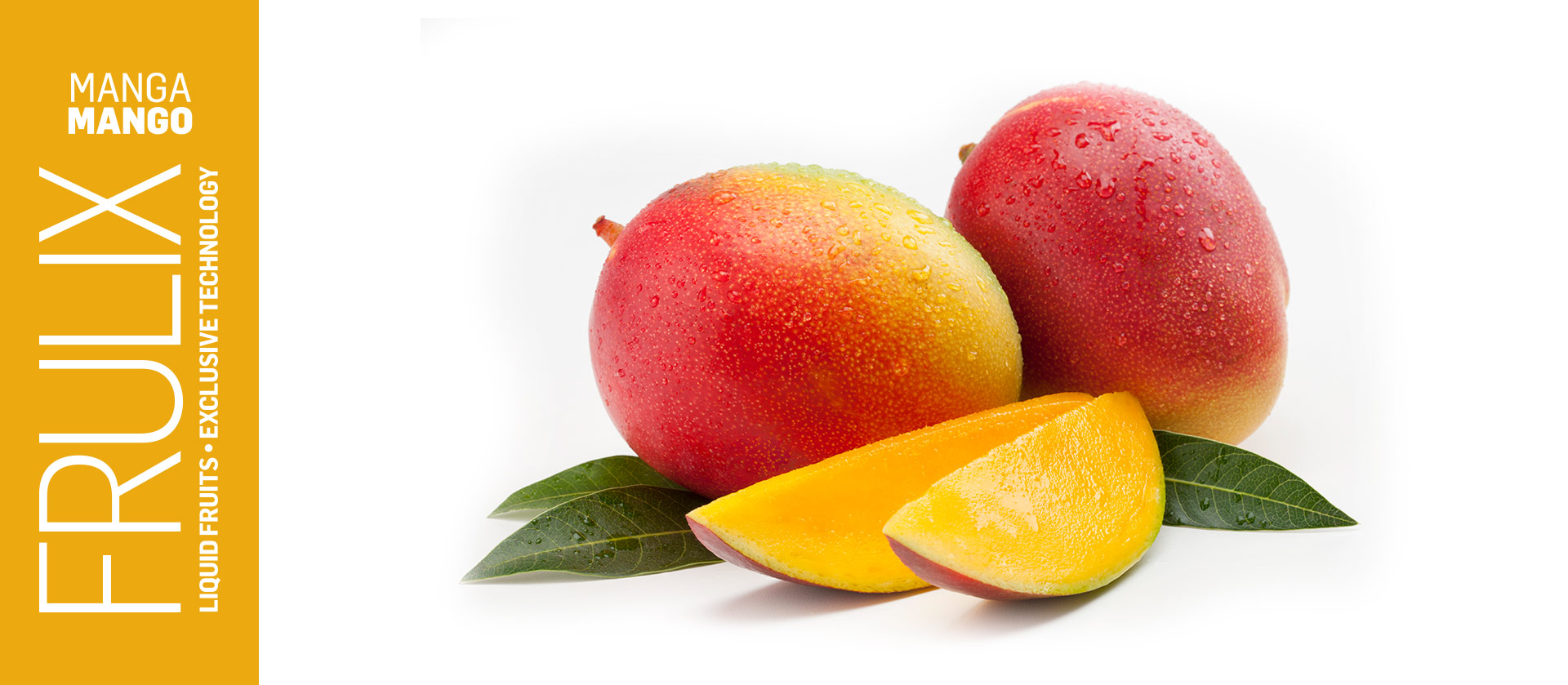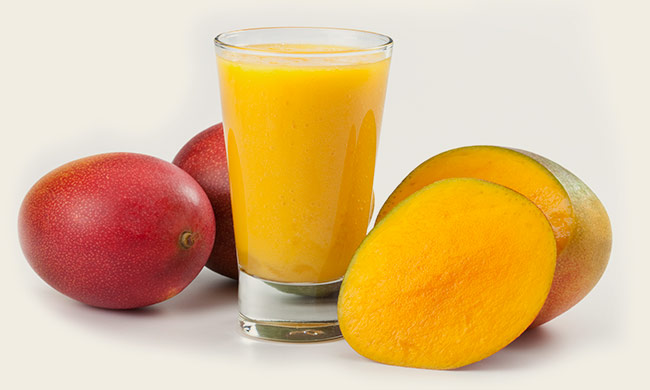
FRULIX MANGA (Mango)
FRULIX MANGA (Mango) is obtained through an exclusive biotechnological process that mimics the natural ripening of the fruit. Using the fruits’ enzymes ASSESSA transforms it’s pulp into a crystalline liquid with all the active ingredients of the fruit, in concentrations equivalent to those found in nature. lt is a highly concentrated ingredient, produced without the adition of solvents.
Mango
Rich in vitamin A
The mango tree, originally from India, is a tropical tree that belongs to the Anacardiaceae family, the same as the cashew tree. ln Brazil, there are around five hundred varieties of mango, varying widely in size, shape and color. The smallest mangoes are the size of a plum, while the bigger varieties can weigh up to 2kg. Mangoes also vary greatly in shape, being round, oval, heart-shaped or elongated.
As regards color, the skin can be dark green, yellow or red, depending on the variety.
Mango pulp is succulent, with a very distinctive flavor; it is sometimes fibrous and has a color that ranges from light yellow to dark orange.
Mangoes are extremely rich in vitamin A (especially when ripe) and contain reasonable quantities of complex B vitamins and vitamin C, as well as some mineral salts, mainly iron.
They also have diuretic properties, which means they are recommended for people who retain liquid in their bodies.
The bark of the tree is used as an infusion for the treatment of colic.
The leaves and pulp of the fruit in syrup form are recommended against colds and bronchitis. The leaves and skin are also used in other treatments, like asthma.

COMPOSITION
Proteins (mg/l)
Minerals
Vitamins*
*Tested after 4 months from manufacturing
As a more concentrated product, FRULIX MANGA (Mango) should be used in smaller concentrations than those normally used when making formulas with conventional extracts.
ANTIOXIDANT ACTION
The test for antioxidant action was carried out in accordance with the Fenton protocol, comparing FRULIX MANGA (Mango) with a saline solution (placebo) and with mannitol as a positive control. The graph below shows the antioxidant action compared to the action of the saline solution.
INHIBITION OF DECOMPOSITION OF DEOXY-RIBOSE (FENTON)
FRULIX MANGA (Mango) shows good anti-oxidant activity when compared to the placebo (81.7%)
FUNCTIONS
Mango is a nutritive fruit, rich in vitamins, essential sugars, antioxidants flavonoids and mineral salts. FRULIX MANGA (Mango) boasts emollient, moisturizing, nutrient and protective properties. It is recommended in hair care products (shampoos, mousses, hair masks, conditioners) in formulas for the replenishment, nutrition and protection of weakened hair. The moisturizing properties of mangos also mean that FRULIX MANGA (Mango) is recommended for the treatment of skin, in products with a nutritive and moisturizing appeal.
Applications
Skin care products
Emulsions, masks, serums, mature skin products, liquid and bar soaps.
Hair care products
Shampoos, conditioners, hair masks, leave on and serums
Usage levels
FRULIX MANGA (Mango) is compatible with the majority of ingredients used in cosmetic formulations for the treatment of skin and hair. It may be incorporated cold, directly into the aqueous phase of the formulas, in accordance with the suggestions of usage levels found in the table below. It is stable at temperatures up to 90 °C, in pH conditions from 4.00 to 11.00.
Frulix exclusive process
1. The Technology
FRULIX is obtained through an exclusive biotechnological process that mimics the natural ripening of the fruit. Using the native enzymes that change the texture of the fruit during its ripening, it is possible to transform its pulp into a crystalline liquid.
2. Production of enzymes
The fruits are harvested, washed and processed into a paste. The slurry is inoculated with microorganisms and the semi-solid mass is placed to ferment. The mixture is separated and the enzymes are removed from the wort.
3. Processing the fruits
The fruits are harvested, washed and processed into the pulp. Seeds and bark are discarded. The pulp is inoculated with the Frulix Enzymes. The residues (fibers, solids) are removed and FRULIX is obtained. The product is stabilized and preserved.
4. Frulix
The clear liquid from the separation step receives preservatives, mixture and filling.


